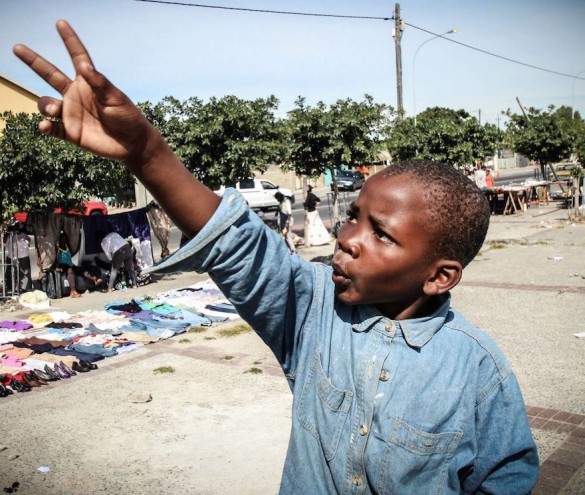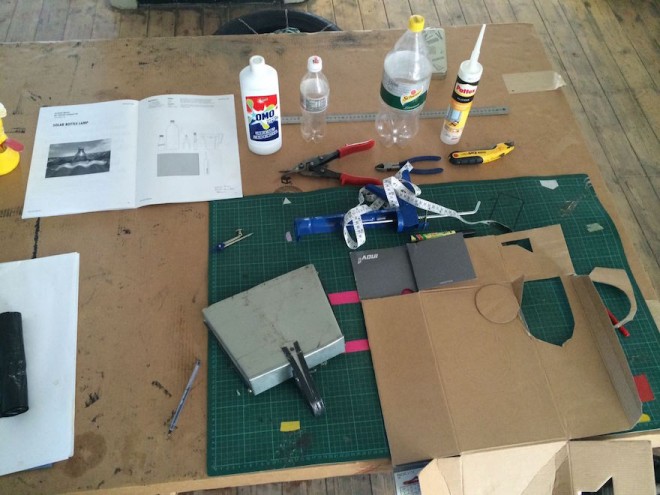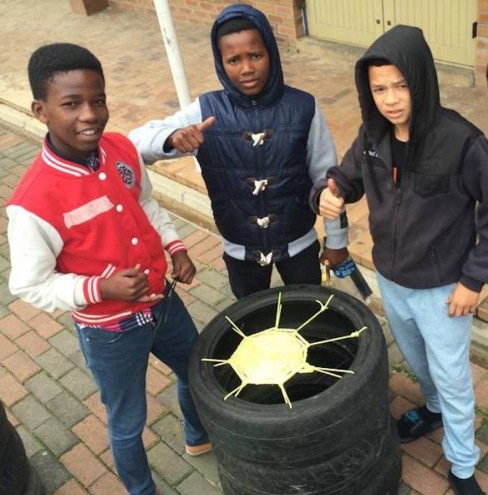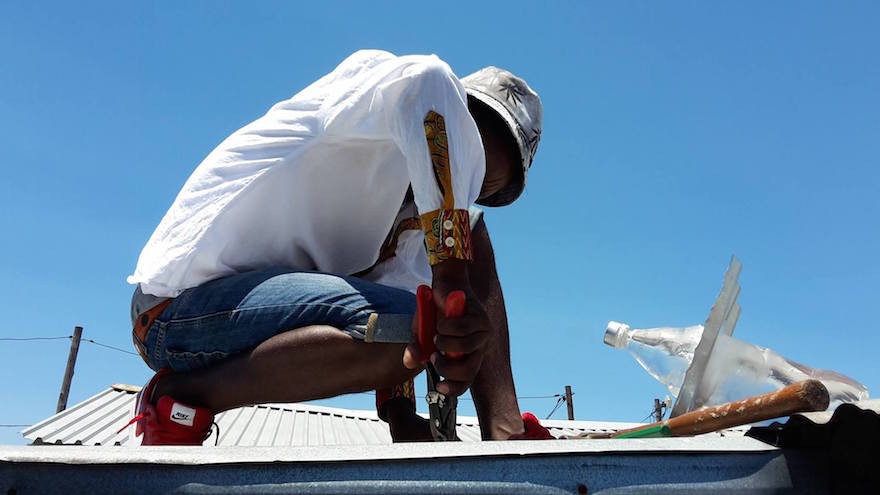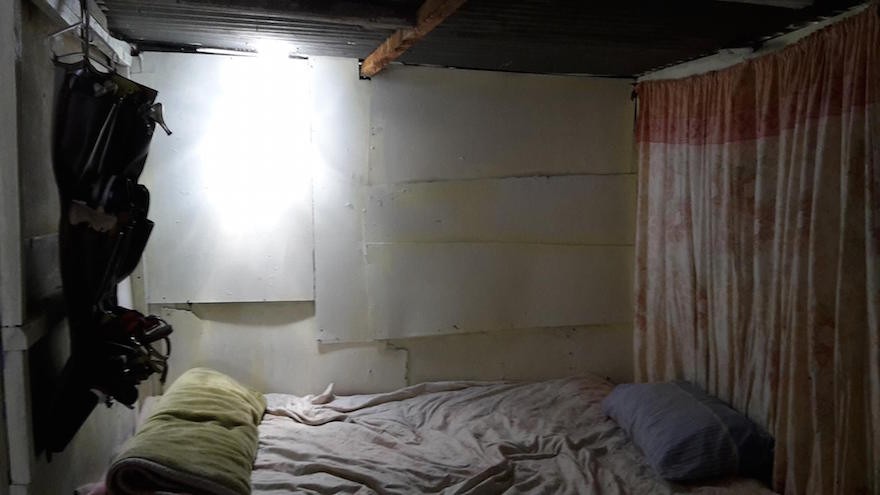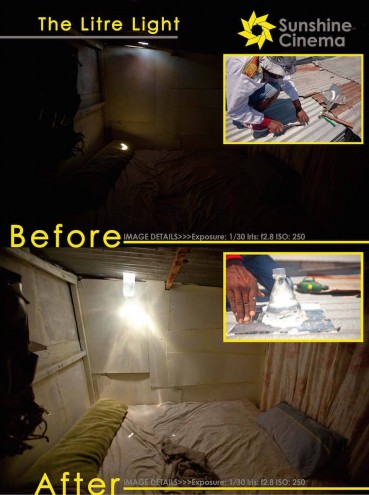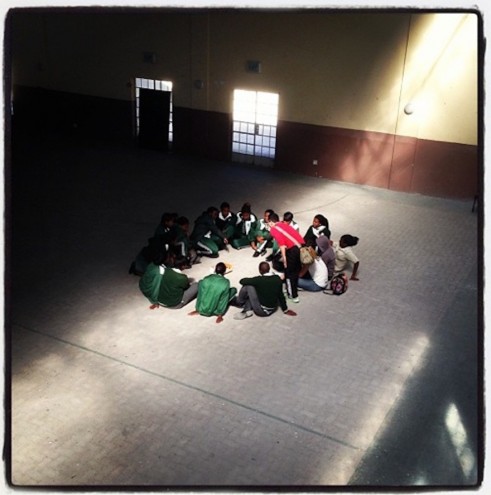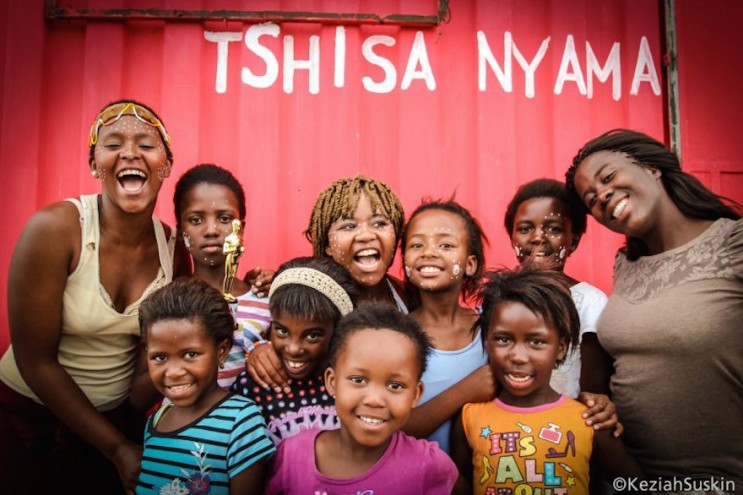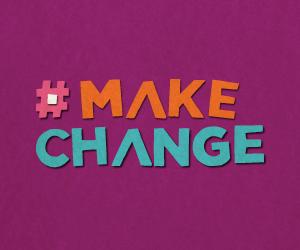Part of the Project
Inspired by the effortless way Scandinavians integrate sustainability into their everyday lives, Janine Johnston started a company called Eco Design Initiative in 2010. This later became The Shift: Inspiring Sustainable Design.
The Shift is a local non-profit company that looks to empower youth through the transference of practical skills. In order to do this, Shift agents teach sustainable designs to communities with their Makerthons, films screened in the solar-powered Sunshine Cinema and tool skills kits they distribute.
The Shift identifies projects that make a difference and use design as a process to improve people’s lives. The agents work in collaboration with the designers rather than working for them by handing out packaged information, DIY films and templates. Their designs – such as a solar cooker made from cardboard and chip packets or a seat made from an old car tyre – are then distributed to communities in a fun and accessible way.
When was Shift created, and by whom?
The Shift started out as the Eco Design Initiative in 2010, an NGO that was founded by myself and a partner (Hwalani Mbaso). At that stage we were also widely recognised as the "No Kak" campaign. A couple of years ago the organisation's name and structure changed to SHIFT: Inspiring Sustainable Design – a non-profit company.
What experience or thought sparked the idea for the organisation?
I followed my sweetheart to Malmö, Sweden and was very quickly impressed by how seamlessly “sustainability” was integrated into everyday life: 400km of bicycle highways and recycling systems in apartment buildings that would serve the local bus company by providing waste for biofuel! I noticed that our country, South Africa, was mostly portrayed as a lovely holiday destination (wine farms, safari) or through sensationalist media, and I really felt that a big part of our people's story was not being told. This inspired the start of collaborations and exchanges based on sustainable design practices.
Which designers do you work with?
We work with many different designers, makers and innovators. Over the years, we've realised that innovation can be found in very surprising spaces. So we like to profile the unexpected/accidental designer as much as we like to involve professional, experienced designer practitioners.
Essentially we identify sustainable solutions from around the world that can be applied to making life better here in South Africa. We test those ideas to make sure that they're relevant (culturally, are they cost effective to make; materials easy to find?) and then package these in ways that are easy to convey and understand.
What communities do you work with?
Most of our work has been implemented in the Western Cape. We collaborate with community partners in Delft, Khayelitsha and Langa as well as Wolseley. This year, we intend to extend that reach to other towns and rural communities in South Africa.
Where did the idea for the Sunshine Cinema come from? Were you already using film as an educational tool?
Sunshine Cinema is the result of a fantastic collaboration with award-winning documentary film producers, Makhulu. We had heard via the grapevine of their idea to produce a mobile, solar-powered cinema and we jumped at the opportunity to integrate this into Shift's practice. Once we started sitting down and sharing ideas, it became more and more apparent that the combination of contemporary media and practical skills and facilitated workshopping could quickly scale the positive impact we were all hoping to achieve. After the first pilot received positive feedback from a group of women in Zambia, we knew we had to roll out a program in South Africa and we got to work right away!
The Shift Caravan takes the practical skills and lessons of The Shift onto the road. You were planning a spectacular 20 000km journey around the perimeter of the country, leaving in November 2014. Where is The Shift Caravan now?
We actually have not quite hit the road yet. We've refined processes, connected with communities and have re-designed our route. . .2014 was a year for us to test and refine our approach and make sure that this is done properly. Most of our activations were Cape Town-based, allowing for easier access to asses impact and uptake of the solutions shared.
What is a Makerthon?
Makerthons are exciting making activities, specially created to get a younger audience involved in the practices of making and mending, and often looking at “waste” as a material that can be re-imagined and re-interpreted. We hosted our very first Makerthon at the Delft South Community Centre. We also staged a much bigger effort for the World Design Capital 2014 Makers + Thinkers event. For that we hosted 100 kids in a 2-hour making session each day!
Do you teach the designs just for individual use or to teach people to commercialise the designs?
Our primary goal is to highlight the fact that we all can make and fix things, and that we really all have the ability to apply our abilities to addressing real problems. We look at sharing designs that are relevant to sustainable development in our communities: things or systems to make life better. This is intended for the individual and their immediate environments. Although we have come across a number of very enterprising participants who quickly see opportunity to scale and commercialise – although “commercialisation” in this instance is in the context of where people are.
Do you provide materials?
Yes. For our activations, whether we're hosting a Makerthon or a Sunshine Cinema Screening and Workshop, the materials are provided or sourced from the environment.
Do you distribute the toolkits for free?
Yes. Our skills kits are to be shared far and wide. The teams spend a lot of time to make sure that these are universal. Our vision for the future is that all of the skills kits are available for free download (and supported with free data for access!) and that community facilitators have their own Sunshine Cinemas and skills kits to share with their own communities. This we see not only as an opportunity to scale and spread sustainable design practice, but most certainly as an economic development opportunity as screenings and workshops become exciting community events.
You are aiming to work towards SA’s National Development Plan – are you funded or helped at all by any government organisations?
The National Development and the International Sustainable Development Goals are referenced to give us a broad scope framework of what we would like to achieve. I think it’s safe to say that most of us would like to eliminate poverty and inequality. We've been lucky to be supported by public sector in the past - National Department of Arts and Culture, the Department of Environmental Affairs, the Swedish Arts Council and Swedish Institute to name a few. We believe that it is very important to involve all stakeholders in positive shifts and development and to achieve real change, we'll need grassroots support all the way through to our policy makers.
Have you ever been teaching design and had someone suggest something really innovative?
All the time! When we connect people in action, it's amazing to see how inspired they become. I think it’s also because we use a lot of really accessible tools and materials and processes that make people recognise what's possible, and that even silly ideas or materials, etc., can all lead to something. Often there's also the magic in the moment, where two (or more) people meet at one of our events, start chatting and discover that they have had similar thoughts and ideas. . .
How can design make a difference?
Design does make a difference – in the most positive way, by positioning people at the centre of the process. The design “experts” are not always the guys in studios or workshops or consultancies. . .the experts are real people, living with and facing challenges of life every day – everyday heroes. That's where we've found the best answers and solutions. Secondly, design is not just about a good concept. It's the action that makes change happen!

